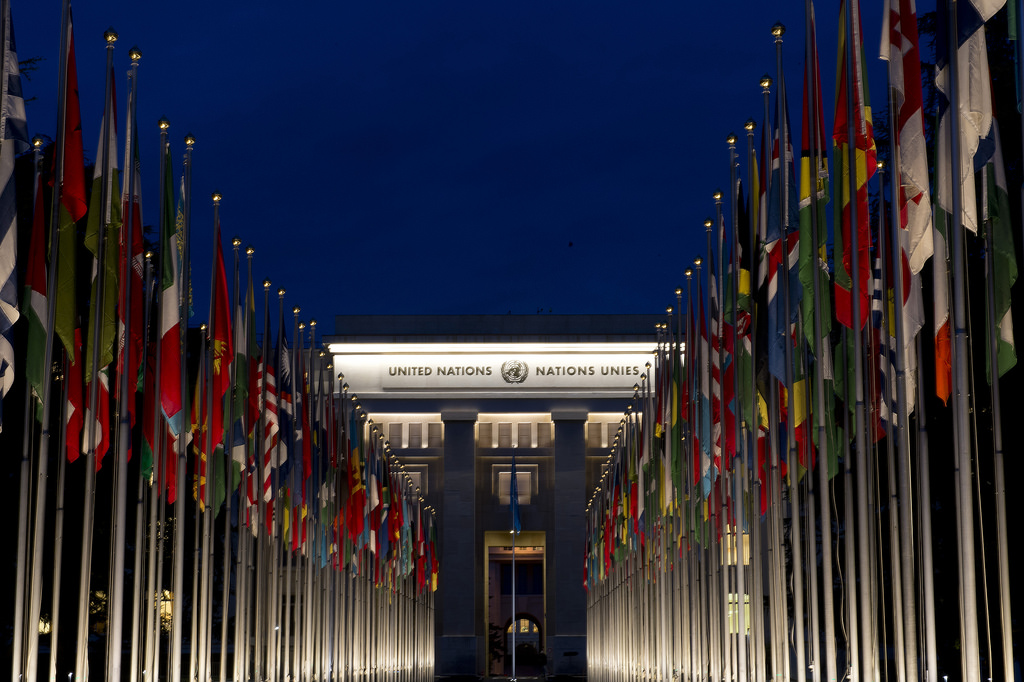
May 1, 2017, by Jake Hodder
Reading Group: The International City
Not only were conferences key spaces where the world order was redesigned in the wake of the World War I – where new borders were drawn and states created – but they were held in towns, cities, and regions that were themselves materially transformed by the increasing intensity and scale of conference events.
Large imperial centres like London or Paris, by their size and connections, developed as key nodes within an emergent international circuitry of conferences. Smaller cities, like Brussels or Geneva, became almost wholly synonymous with international organisations and the conferences they organised. Whilst small resort towns like San Remo, Locarno, or Davos are all associated with conferences that bare their name. This distinctive geography reflects the organisational and hospitality infrastructure on which conferences depend – an industry of venues, hotels, bars, clubs, and salons; and a workforce of translators, organisers, typists, printers, map makers, and tour operators who depended on them for their livelihoods.
In our two most recent reading groups we have sought to explore this relationship between internationalism and the city in greater depth through, first, the large imperial/global cities of London, Paris and New York, and second, the smaller, internationalist centres of Brussels, Geneva and Vienna.
Each reading underscored the distinct claims to internationalism which these cities made. Huggins classic account of the Harlem Renaissance (a finalist of the 1972 National Book Award) showed how the north-Manhattan district developed in the first half of the twentieth century into a ‘capital of the black world’. Characterised by intellectual, artistic and cultural vibrancy, Harlem became a site which infused black protest and militancy with a Pan-African and internationalist flavour. This is evidenced through its buoyant publishing industry and the hosting of the Universal Negro Improvement Association’s international conventions or the 1927 Pan-African Congress.
If Harlem was a stage on which international, black history could play out, Marc Matera’s Black London shows how the city itself can become a facilitator and provocateur. His vivid account of interwar London shows how the administrative centre of Empire was an obvious site for anti-colonial resistance, and how spaces like cafes and musical halls became key sites in these political encounters and exchanges.
The importance Matera affords London’s social geography, is also reflected in Michael Goebel’s account of interwar Paris, a city in the midst of an intense period of post-war migration. If London was provocateur, Goebel shows how Paris functioned as an incubator and amplifier – where the everyday difficulties faced by migrants arriving in the city became enmeshed within a solidifying anti-colonial praxis. In part, this was enabled because of the city’s self-identification as a place of welcome and hospitality, allowing a political manoeuvrability which was largely outlawed in the colonies.
Our second reading group, focussed on the interwar geographies of the smaller cities/states of Geneva/Switzerland, Brussels/Belgium, and Vienna/Austria. Madeleine Herren’s work explores how the cosmopolitan spirit of Geneva – esprit de Genève – found spatial expression in the newly-formed League of Nations, and the construction of its operational headquarters, the Palais des Nations, one of the largest complexes of its kind when completed in the 1930s. She also shines light, however, on the hotels, bars, and meeting venues which accommodated the League’s delegates and meetings – demonstrating how the entire city was transformed into an international contact zone.
These themes are also explored in Daniel Laqua’s account of the famed Belgian internationalists Henri La Fontaine (1854-1943) and Paul Otlet (1868-1944). Laqua usefully reminds us how the recognition of an ‘international’ city is rarely, if ever, accidental. In the case of Belgium, the national government played a central role in supporting Brussels’ position as a host city for international organisations, congresses and events in the interwar years. These conceived of Belgium, itself a state formed from international agreement, as an unparalleled centre for internationalist exchange, not only in the political context but in all manner of intellectual, cultural, musical, artistic and scientific fields.
Lastly, in her account of Vienna, the late historical geographer Elisabeth Lichtenberger shows how no city was transformed more by WWI than the Austrian capital. Striking a different note, Lichtenberger demonstrates that in the case of Vienna the interwar years did not open the promise of internationalism, but spelled its greatest challange. Once the cosmopolitan centre of the vast Austro-Hungarian Empire, in the 1920s this imperial centre was cut off from many of the transnational networks which had sustained its functions as a great commercial, financial and administrative hub. Vienna underwent rapid change and urban experimentation as it came to terms with its new place as the capital of a much-reduced Austrian republic, largely comprised of conservative small towns and villages, whilst maintaining an outward-looking perspective increasingly at odds with its nation’s position.
Readings:
Goebel, M. (2016). “The Capital of the Men without a Country”: Migrants and Anticolonialism in Interwar Paris. The American Historical Review, 121(5), 1444-1467.
Herren, M. (2017) Geneva, 1919–1945: The Spatialities of Public Internationalism and Global Networks in Jons et al. Mobilities of Knowledge, Springer.
Huggins, N. I. (2007). Harlem renaissance. OUP. (chpt 1 – Harlem: Capital of the Black World)
Laqua, D. (2009) Transnational endeavours and the ‘totality of knowledge’: Paul Otlet and Henri La Fontaine as ‘Integral Internationalis’ in fin-de-siecle Europe in Brockington, G. (ed). Internationalism and the Arts in Britain and Europe at the Fin de Siècle. Peter Lang.
Lichtenberger, E. (1993). Vienna: bridge between cultures. Belhaven. (Chpt 3 – “The crises of the interwar period (1918-1938)”)
Matera, M. (2015). Black London: the imperial metropolis and decolonization in the twentieth century. University of California Press. (chpt 1 – the Imperial and Atlantic horizons of Black London)
No comments yet, fill out a comment to be the first

Leave a Reply